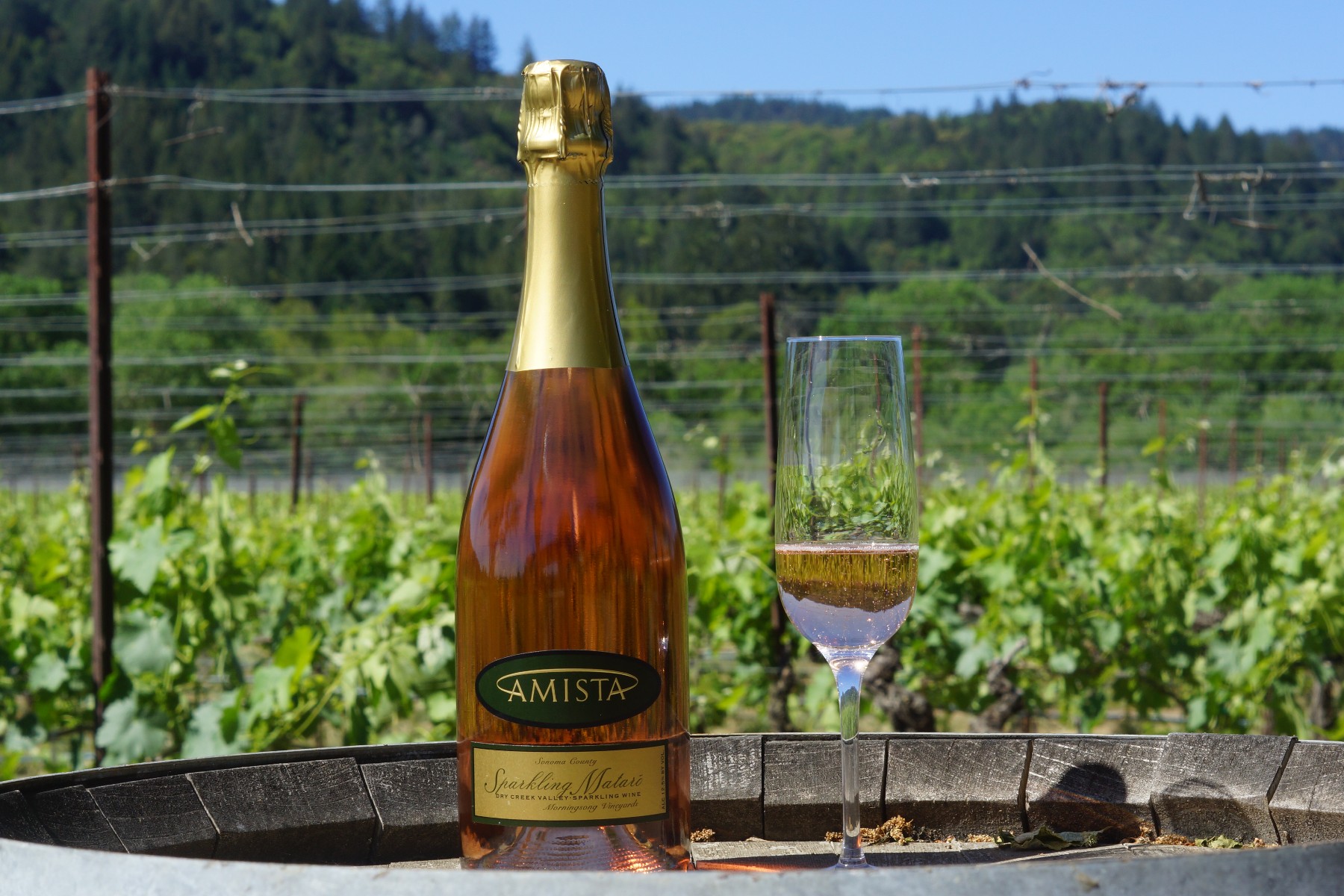Sparkling Moments at Amista Vineyards
Dry Creek Wineries and Amista Vineyards Mark Milestone Anniversaries
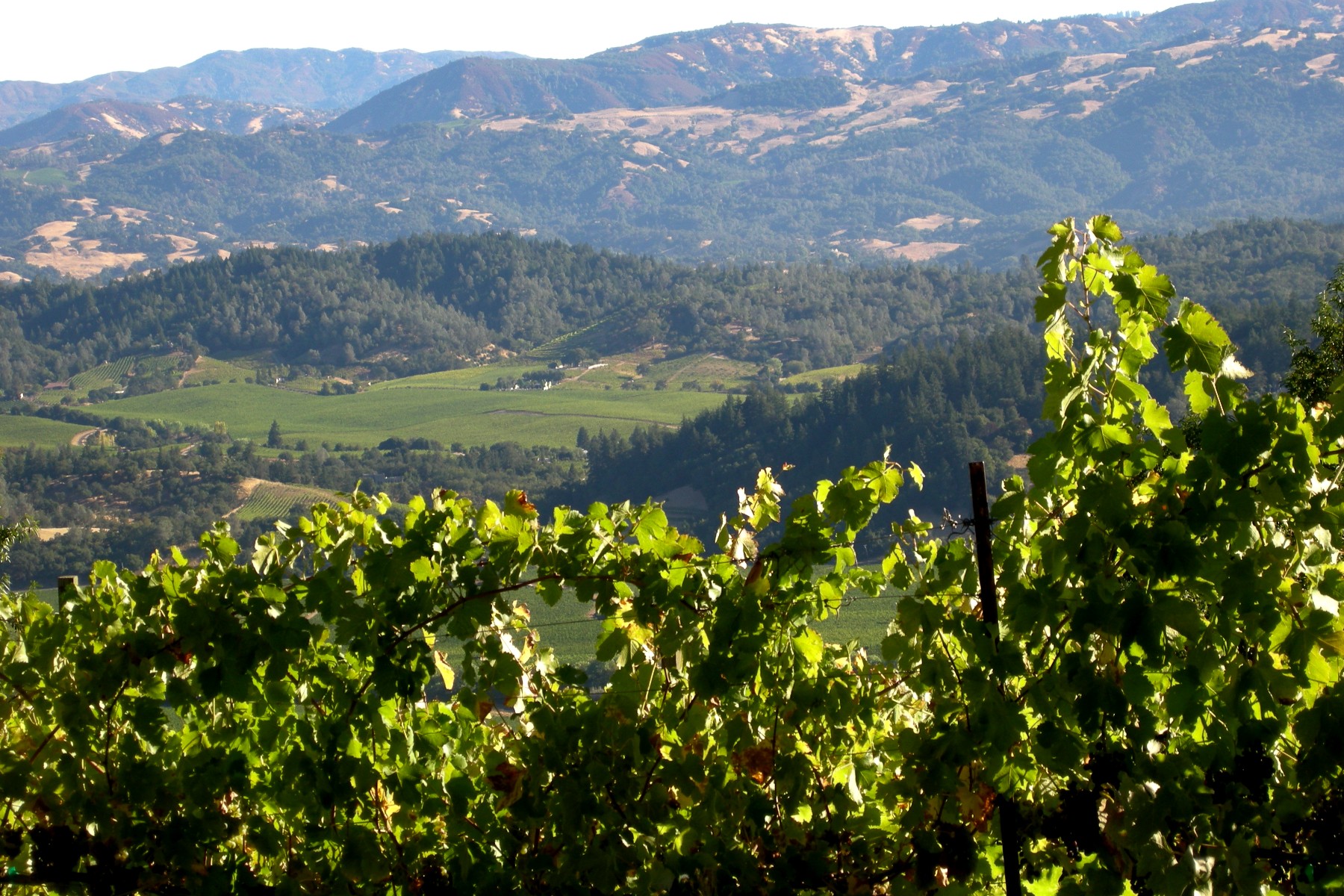
Amista is fortunate to be among the incredible array of Dry Creek wineries that came together to celebrate the 40th anniversary of the Dry Creek appellation at a special tasting high above Lake Sonoma. Dr. Liz Thach, Master of Wine, professor, and wine writer was in attendance on a beautiful day in June and writes about the virtues of Dry Creek in Forbes magazine.
“If you enjoy food and wine get-aways with magnificent vineyard views, the Dry Creek Valley AVA of Sonoma County may be the next wine region you should visit. And the timing couldn’t be better, because Dry Creek Valley wineries are celebrating their 40th anniversary of being an official AVA (appellation) this year,” declares Dr. Thach.
Why Dry Creek Valley is Special to Us
We are grateful every day of every year that we found this incredible valley and the town of Healdsburg on our first visit in 1984. We eventually decided to make it our home in 2002. A lot has changed in that time, but the sense of community, the pioneering spirit and love of the land remains. We are humbled to be surrounded by pioneering wineries. Dr. Thach identifies them in her article, “The two oldest existing wineries in Dry Creek Valley are the Frei Brothers and Pedroncelli, but other famous wineries, established in the 1970’s include A. Rafanelli, Dry Creek Vineyards, Mill Creek, Preston, Lambert Bridge and Lytton Springs.”
The other special aspect of Dry Creek is that it is small – just 16 miles long and 2 miles wide – and rural – just two stop signs. The views of the tree-studded hills from the valley floor are as spectacular as the views of the vineyards from the hills. There’s something about gazing out at acres of vines that is both calming and uplifting at the same time.
What Makes Healdsburg So Charming?
“Located 70 miles north of San Francisco, and just outside the charming town of Healdsburg, Dry Creek Valley is one of the oldest wine regions in California, settled just after the California Gold Rush of 1849,” writes Thach. But what makes it charming is the combination of an authentic sense of community where people know and care about each other and the exhilaration of welcoming visitors from all over the country and the world. Together we share the enjoyment of incredible weather, a diverse selection of Dry Creek wineries to visit, world class cuisine and lots of outdoor activities.
Dr. Thach’s mentions several restaurants, “The 3-Michelin star restaurant, Single Thread…along with other popular establishments such as Barndiva, Dry Creek Kitchen, the Matheson, Valette, The Madrona, and many others.” Among the many others we also love are Baci, Willi’s Seafood, Bravas Tapas, and Guiso Latin Fusion plus Diavola and Catelli’s in the nearby village of Geyserville. Yes, there are lots of great dining options! And can you believe that a town of under 12,000 would have three fantastic bakeries – Downtown Bakery, Quail and Condor, and Costeaux French Bakery?
For locals and those fortunate enough to visit at the end of May, there is the quintessential small-town event, the Healdsburg Future Farmers Fair and Twilight Parade. It is truly a celebration of Healdsburg’s roots in agriculture and community. Next year the event will celebrate its 75th anniversary. The tractors, flatbed trucks, fire trucks, 4-H clubs and school bands have a great time “performing” in the parade while the onlookers pack the streets and front yards along the route complete with picnics, barbecues and plenty of local wine.
How About the Dry Creek Wines?
The early Italians who originally settled Dry Creek planted and produced primarily Zinfandel and field blends. But the pioneering spirit generated other varietals that expanded the diversity of Dry Creek wines, from Sauvignon Blanc to Bordeaux blends and Rhône-style varietals like Grenache, Syrah and Mourvèdre. At Amista, we make all three of those Rhône-style wines plus a blend of the three we call Tres.
Is There Sparkling Wine in Dry Creek?
Yes! “During the reception, Amista Winery shared one of their sparkling wines, made from mataro grapes. ‘We have become known for making sparkling wine from unique varietals,” stated Amista Estate Director, Brian Shapiro.” In fact, at Amista we currently produce six sparkling wines, all made using the traditional Methode Champenoise, the same process used to make French Champagne.
Next year we will introduce a 7th sparkling wine to mark our 20th anniversary. We are far younger than the original pioneers and half the age of the Dry Creek AVA, but we are committed to upholding the pioneering tradition and the friendly spirit of Dry Creek Valley. After all, Amista, roughly translated, means making friends.
Read Visiting The Dry Creek Wine Region Of Sonoma County by Dr. Liz Thach in Forbes.
5 Surprising Facts About Grenache
All You Need to Know
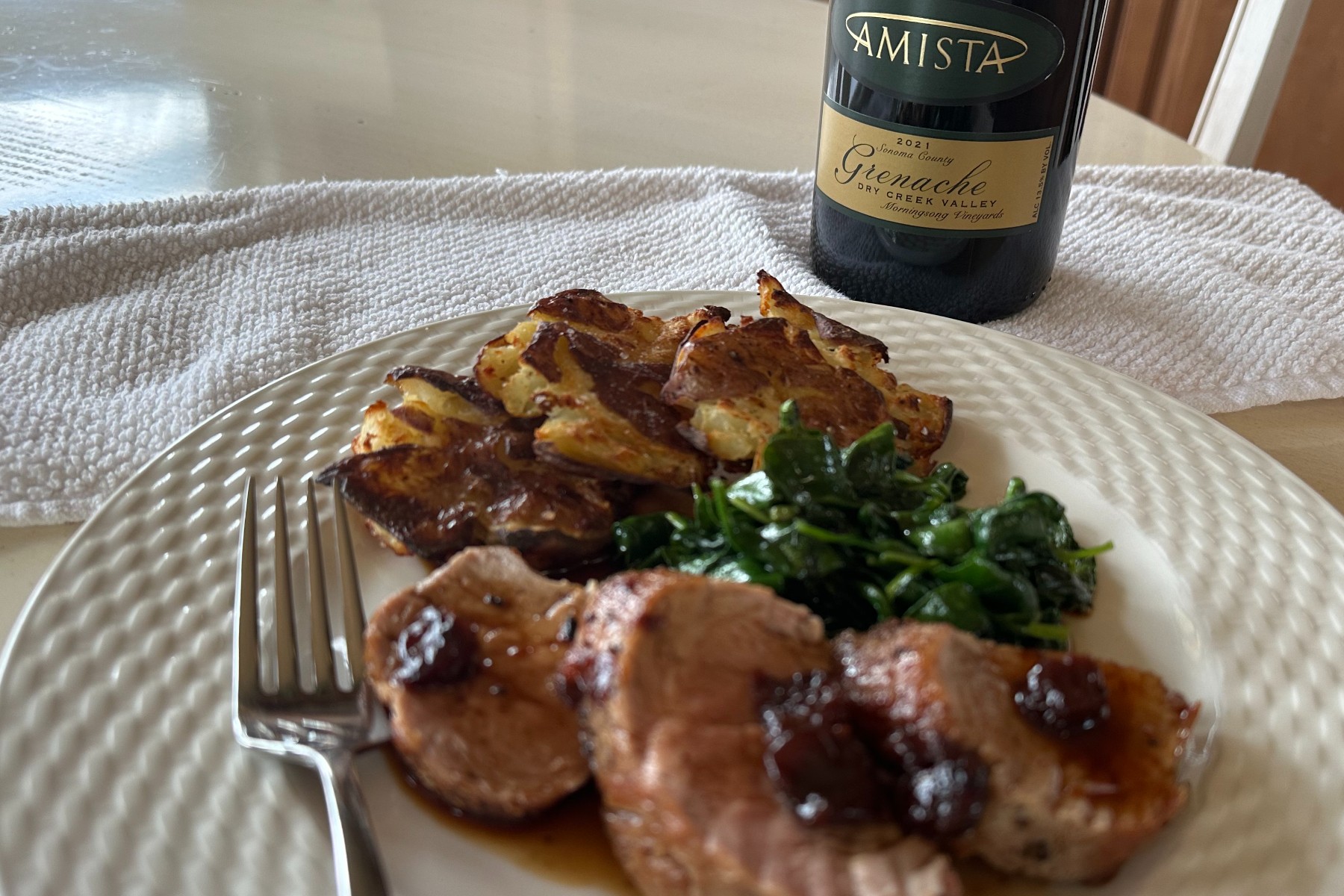
...plus a delicious Grenache pairing
Why care about Grenache, you might ask? Grenache has gained significant popularity and recognition in the world of wine. Its flavor profile appeals to a wide range of wine lovers and its medium body and medium tannins enable it to pair with a vast array of dishes and cuisines.
I have fallen in love with Grenache since we first added some to our estate vineyards in 2011. But what prompted me to write this post was a recent quote from a wine writer who attended the 40th anniversary celebration of the Dry Creek Valley AVA. Wine writer Mike Dunne proclaimed, “Forty years after federal authorities designated Dry Creek Valley an American Viticultural Area, the appellation’s signature wine has emerged – Grenache!”
That was music to my ears! We added our first Grenache vines despite the widely held opinion that Zinfandel was considered the signature grape in Dry Creek. I didn’t know much about Grenache then, but I knew I loved its medium body and that it was a great match for Mediterranean dishes, such as grilled meats, roasted vegetables, tapas, and even spicy foods – all the foods I love.
Pork tenderloin garnished with a raspberry balsamic sauce goes beautifully with Grenache. Add crispy smashed potatoes and sauteed spinach for a sensational taste experience.
5 Surprising Facts About Grenache
-
Grenache is the name in France; Garnacha is the name in Spain
-
Today Grenache/Garnacha is the 7th most planted grape in the world (5th among reds)
-
Grenache is one of the varieties in the renowned wines of the Châteauneuf-du-Pape AOC and has first billing in the trio of grapes that make up GSM blends (Grenache, Syrah, Mourvèdre)
-
Although often associated with France, it is widely agreed that Garnacha originated in Spain
-
Grenache is now referred to as a Rhône varietal, the world over
3 Interesting Tidbits about Grenache at Amista
- Today Grenache makes up 30% of the planted acres on our Morningsong estate vineyards
- Amista crafts the only Sparkling Grenache north of the Bay Bridge in California
- Grenache is used in seven of our Amista wines
Garnacha or Grenache?
Garnacha and Grenache are the same grape variety, known by different names in different regions. "Garnacha" is the Spanish name for the grape, while "Grenache" is the French name. The grape is believed to have originated in the region of Aragon in northeastern Spain.
While the grape variety itself is the same, there can be stylistic differences in the wines produced from Grenache depending on the terroir and winemaking techniques used in different regions. For example, Garnacha wines from Spain, particularly from regions like Priorat and Rioja, often exhibit a ripe, fruit-forward character with a touch of spiciness. Grenache wines from France, particularly from the southern Rhône Valley and Châteauneuf-du-Pape, can be more complex, showcasing a range of flavors including red and dark fruits, herbs, and floral notes.
A Widely Planted Wine Grape Variety
Although not as widely planted as Cabernet Sauvignon, Grenache/Garnacha is the 7th most planted grape in the world. Here are the top ten as of 2020 according to OIV (International Organisation of Vine and Wine).
Top grape varieties by planted hectares
1. Cabernet Sauvignon, 840,000 acres (340,000 hectares)
2. Merlot, 657,300 acres (266,000 hectares)
3. Tempranillo, 570,800 acres (231,000 hectares)
4. Airén, 538 700 acres (218 000 hectares)
5. Chardonnay, 518,900 acres (211,000 hectares)
6. Syrah, 470 000 acres (190,000 hectares)
7. Grenache Noir, 402,780 acres (163,000 hectares)
8. Sauvignon Blanc, 299 000 acres (121,000 hectares)
9. Pinot Noir, 285,000 acres (115,000 hectares)
10. Trebbiano Toscano / Ugni Blanc, 274,300 acres (111,000 hectares)
Grenache Plays a Starring Role in Châteauneuf-du-Pape
Grenache is one of the stars in the production of Châteauneuf-du-Pape wines and GSM blends. Châteauneuf-du-Pape is a renowned wine appellation located in the southern Rhône region of France. It is known for producing rich, complex, and full-bodied red wines that are highly sought after by wine enthusiasts around the world.
In Châteauneuf-du-Pape, Grenache is the dominant grape variety and is often the star of the blends. It thrives in the region's warm and sunny climate, where it can fully ripen and develop its characteristic flavors and aromas. It is accompanied by other varieties to create a harmonious and balanced wine. The most common blend, known as a GSM blend, consists of Grenache, Syrah, and Mourvèdre. Each variety brings its own unique characteristics to the blend, resulting in a wine with layers of flavors and a complex profile. The combination showcases a balance between fruitiness, spiciness, and structure. The wines are often full-bodied, with a silky texture, well-integrated tannins, and a long, lingering finish.
The Rhône Variety that Originated in Spain…or Italy
The origins of the Garnacha grape variety, also known as Grenache, have been the subject of some controversy and debate among wine experts and historians. While it is widely accepted that the Garnacha grape has Mediterranean roots, the specific location of its origin is still uncertain.
There are several theories regarding the origin of Garnacha. One theory suggests that Garnacha originated in the region of Aragon in northeastern Spain, where it has thrived for centuries, and it is home to some of the oldest Garnacha vineyards.
Another theory suggests that the grape may have originated in the region of Sardinia, Italy. Proponents of this theory point to genetic similarities between Sardinian grapes and Garnacha, as well as historical records that indicate the presence of Garnacha in Sardinia before it became widely established in Spain.
Grapevine cultivation and trade have taken place across the Mediterranean for thousands of years, making it difficult to pinpoint the exact origin of many grape varieties. Genetic studies have shed some light on the relationships between different grape varieties, but they have not definitively settled the debate about Garnacha's precise origin.
Today Grenache is Known as a Rhône Variety
Ironically today Grenache is known as a Rhône variety. This is due to its historical and significant cultivation in the Rhône Valley of southern France. The Rhône Valley is renowned for its production of red wines, and Grenache has been growing there for centuries. I wonder if it also due to the fame of Châteauneuf-du-Pape, which has no such rival in either Spain or Italy.
Still Thirsty?
If you want to learn more about Grenache, here is a curated list of resources.
Three Novel Ways to Celebrate National Wine Day
How about throwing a wine party with a new twist...
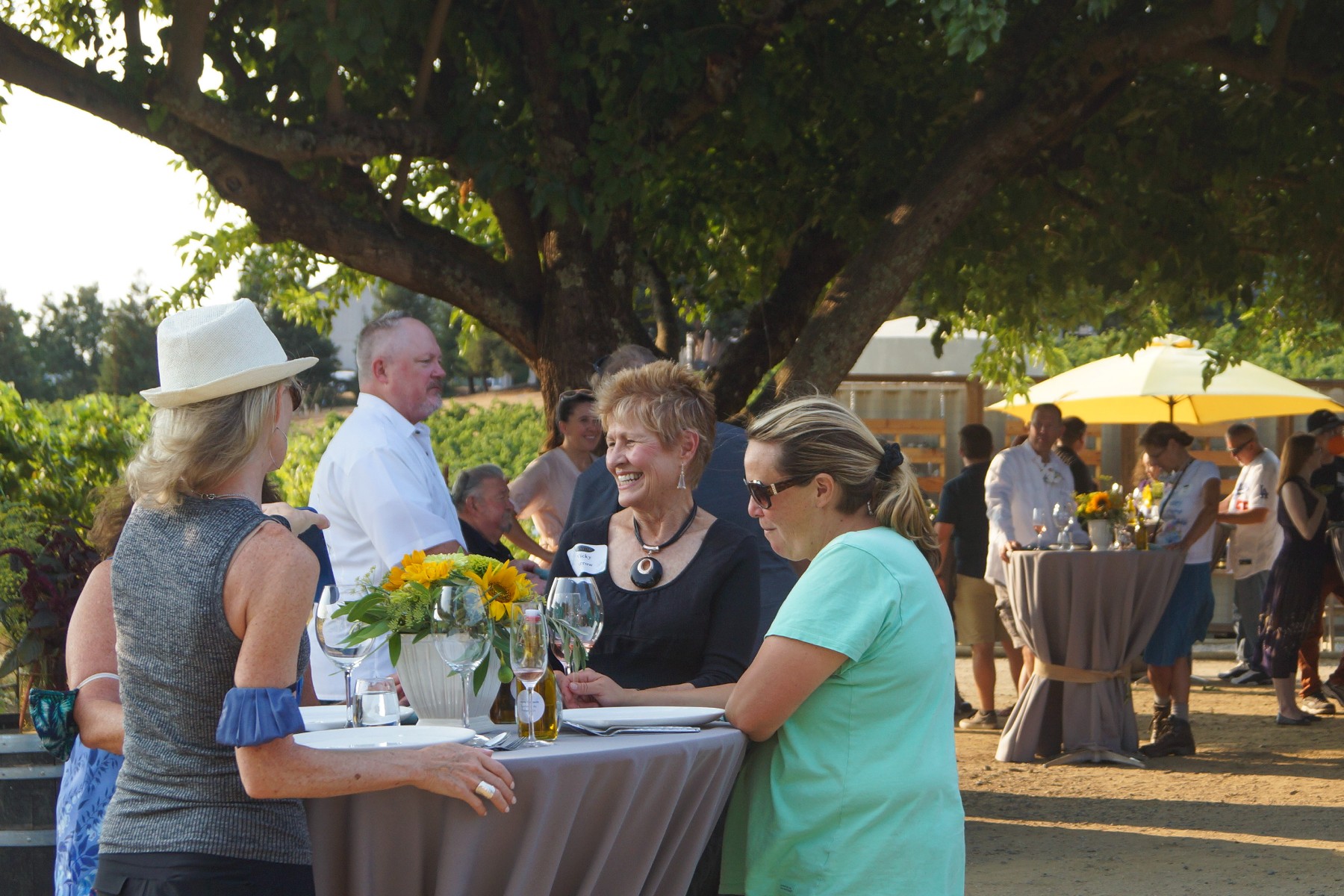
...that is sure to delight your wine-loving friends!
Did you know that National Wine Day is coming up this month on May 25? It is the perfect occasion to raise a glass to celebrate the exquisite flavors and aromas of wine. At Amista – which roughly translated means “making friends” in Spanish – we think the best way to celebrate is with friends. If you're looking for novel ways to commemorate this special day, here are three parties designed to explore the rich tapestry of wine with your special group of wine-loving friends.
Host a “You Aren’t Going to Believe This Great Wine I Found Party”
Gather your wine loving friends, family, or colleagues to celebrate National Wine Day by hosting a wine tasting party. But let’s kick it up a notch and ask each guest to bring an unusual wine they’ve discovered and come to love. It could be an obscure variety, an unusual style or from an unexpected part of the world. Each guest takes a turn telling the story of how they discovered their special wine and why they love it. Then everyone has a taste.
Such a party needs some equally interesting nibbles. Of course, there is the usual cheese and charcuterie spread, which is always welcome. But a “You Aren’t Going to Believe This Great Wine I Found Party” demands a twist. At Amista, we serve freshly popped popcorn. It’s so popular that when our popcorn machine broke one day, our guests went on strike.
We use a lemon-herb salt which showcases our sparkling Blanc de Blanc. To make it work for your party, assemble an assortment of at least a half dozen spice blends that can be sprinkled on the popcorn – a kind of popcorn bar. Choose a variety of blends that go with different wine flavor profiles. It’s novel, it’s easy and it’s fun to see what herbs and spices pair with each of the wines.
If I were going to the party, I would bring our Amista Sparkling Syrah. This wine never ceases to amaze people. Its cranberry color fools them into thinking it’s going to be sickly sweet and yet it’s quite dry – always Extra Brut (6 grams of sugar per liter or less). Also surprising is that it goes so well with diverse foods from Thanksgiving dinner to sushi to Peking duck. It even works with panna cotta and raspberry coulis! And the interesting tidbit is that we would never have made it if it weren’t for a class project at our local junior college.
If you want to create a delightful ambiance to celebrate National Wine Day, throwing a “You Aren’t Going to Believe This Great Wine I Found Party” will do the trick. The wines, the personal stories and the popcorn bar will provide a rich backdrop for exploring new wines, flavor combinations and conversations among friends.
Throw a “My Favorite Winery Party”
The invitation list for this party requires that your guests have a favorite winery they have visited in person. If you don’t have any friends who have visited a winery in person, I would say you need to make some new friends! But if you’re reading this blog post, you undoubtedly have friends who have gone wine tasting, so I’m assume you’re good to go. Invite them to celebrate National Wine Day with you by bringing any bottle of wine from their favorite winery.
Have each guest describe the wine they picked and why this is their favorite winery. Then everyone gets a chance to taste the wine. I suggest you start with the guests who brought sparkling wines, then whites, followed by rosés and then reds, from lighter to heavier in body, and ending with dessert wines.
It’s always good to have snacks when you’re tasting a lot of wine. It can be something very simple but tasty like bowls of kettle chips, popcorn, pretzels and nuts. You can also add a selection of cheeses, charcuterie and dried fruits.
If I was invited to such a party, I would proudly bring an Amista wine and it would have to be my go-to bubbly, our Amista Blanc de Blanc. This is the wine that marks the end of my workday and the beginning of my evening. It frequently continues as the wine that accompanies our dinner since we often have a fish dish or light pasta, which makes an amazing combination.
Hosting a “My Favorite Winery Party” allows your friends to share (and re-live) the wines and experiences they have savored on their wine journey. Celebrating wine is more than the wine itself. It’s the stories; it’s the experiences; it’s the landscapes; it’s the people that we remember when we visit a winery. Very often those moments are experienced with friends and create a lasting memory of shared happiness and joy.
Organize a “Bring Your Own Best Pairings (BYOP) Dinner Party”
National Wine Day presents an excellent opportunity to elevate your culinary experiences by pairing wines with delicious dishes. Whether your friends are seasoned chefs, enthusiastic home cooks, or discerning takeout experts, the versatility of wines allows for exciting pairings. Ask each guest to bring a dish and a wine that exemplifies their perfect pairing. You can assign hors d'oeuvres, first courses, entrees, sides and desserts. Or if you feel especially adventurous, you can leave it all to your guests and be prepared for a surprise!
Much like a winemaker dinner, have each guest describe their dish and the wine they chose for the perfect pairing before the dish is served. Hopefully there will be enough food and wine to try some of the dishes with different wines. Who knows, perhaps an even more perfect pairing will be discovered!
My perfect pairing would be a classic French cassoulet with our Amista Syrah. I adore beans – go figure - but when you combine them with chicken, duck confit and sausage and cook them slowly for hours with a crust of crispy breadcrumbs, well, I’m in heaven. And while I often describe our Syrah as a crowd pleaser, the perfect wine to take to a dinner party because it works with so many dishes, the cassoulet elevates it to a whole new level and vice versa.
The “Bring Your Own Best Pairings (BYOP) Dinner Party” is a unique variation on a classic winemaker dinner. It’s a way for everyone to channel their inner winemaker and inner chef and experience the varied tastes of a whole group of friends. What better way to celebrate the spirit of National Wine Day.
National Wine Day provides an excellent opportunity to appreciate the artistry of winemaking and the distinctive flavors of wines from around the world. Although seriously, there's no need to wait for a special day. You can choose any day to raise your glass and toast to the pleasures of fine wine, good food and dear friends. Cheers!
You're invited to explore the sparkling wines and Rhône varieties at Amista. We hope we'll become your new favorite winery. Come Taste With Us!
Does Color Matter in Sparkling Wine?
For the Fan Favorite, Sparkling Syrah...
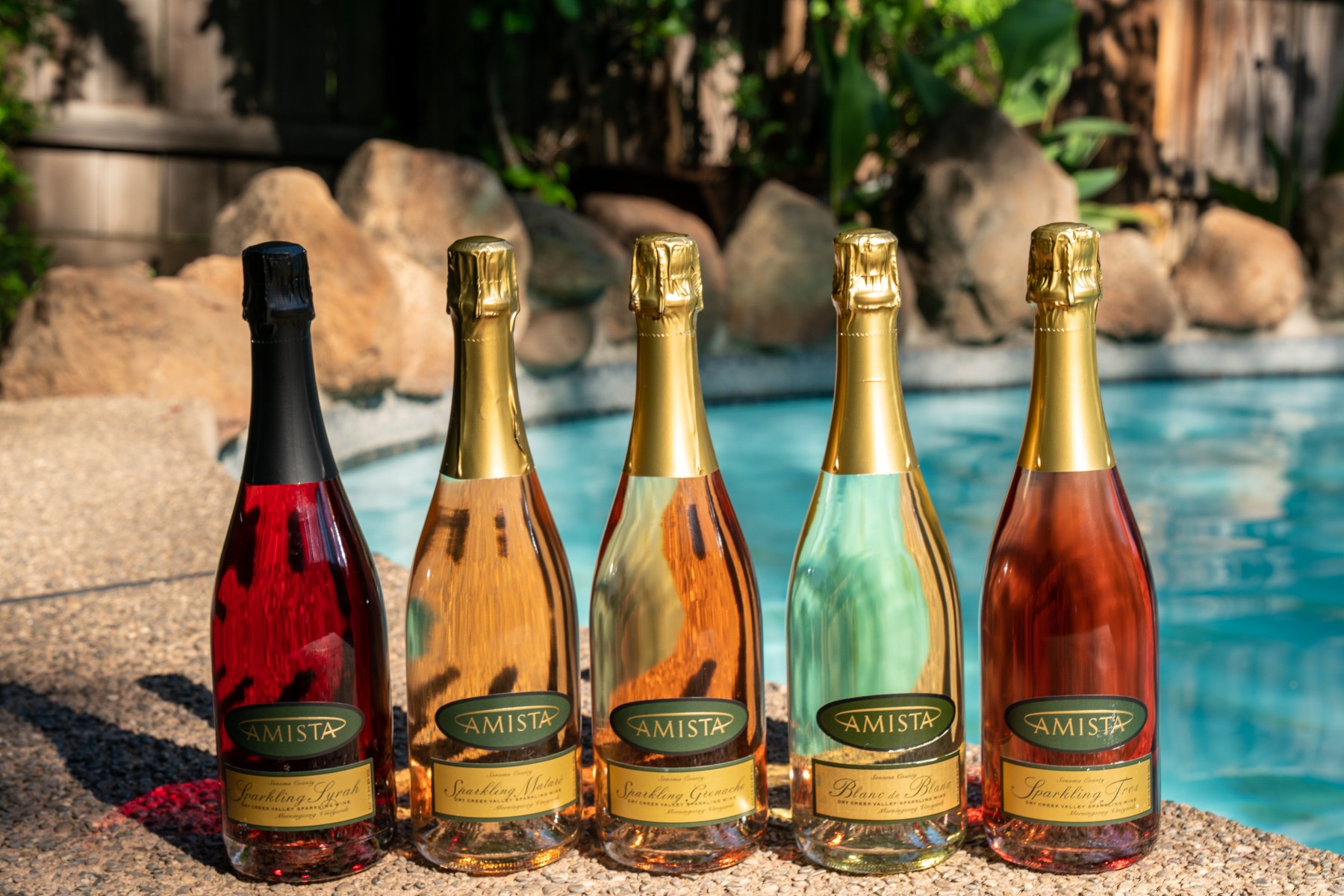
…will it be color or flavor?
Does Color Matter?
This is the question we went round and round about during our most recent dosage trial for our Sparkling Syrah. In fact, this was our second dosage trial for this wine because during the first trial, we all agreed that the color of the wine was too light. The colors of all our sparkling rosé wines vary a little from year to year. Nevertheless, the Sparkling Syrah is typically cranberry in color.
This Sparkling Syrah Was Not the Usual Cranberry Color
This one was more of a coral color. It’s beautiful in the glass and the flavors are delightful. It just looks different than what we or our members are used to. So, after our first trial, winemaker Ashley Herzberg decided to go back and try adding a small amount of still Syrah to the dosage. She brought a 1% and a 2% addition. We all liked the look of the 2% addition in the bottle. It was still a bit lighter than usual and leaned more toward coral than cranberry, but it was closer to the color we’ve all come to expect.
Always Cranberry, Except for the “Dark Year”
That was the 2010 vintage, before the other members of our team had joined us. Ashley, Mike and I remember it well. The “dark year” was alluring in the bottle but to our taste, it had just a little too much of the earthy flavor of Syrah. We love that flavor in the red Syrah. In our sparkling rosé we want a brighter, more fruit forward flavor.
But How Does It Taste?
OK, so back to the dosage trial. After seeing the colors of the two different additions in the bottle, it was time to pour and taste. We poured the 1% and 2% additions and looked at them side by side. In the glass, the differences in color were more subtle, although all of us preferred the color of the 2%. Now for the tasting. As soon as we tasted I got that hint of earthy Syrah in both samples. I didn’t want to say anything but then Ashley mentioned it. We decided we needed to go back and try the original without any added Syrah.
We were all blown away with how much fresher and fruitier it tasted, with bright bubbles on the tongue. The Syrah addition had weighed the wine down a little. The wind went out of our sails because we loved the taste of the original and preferred the color of the 2% addition.
What Do Our Customers Expect?
A lively discussion ensued about how much fun it is to do a tasting for our guests and start with a splash of our Blanc de Blanc, then proceed to one of the lighter rosés and then unveil the cranberry colored Sparkling Syrah. We call it “joy in a bottle” and it brings a festive note to, not only to a tasting, but to any occasion or dinner table.
Then we had an in-depth conversaton about our club members. We have many who have been members for years and they remember the colors of our different sparkling rosés. That is in part because all our sparkling wines are bottled in flint (clear) glass, so the color is visible. The other is that we have several rosés – many sparkling houses have only one. We’ve made a point to craft them so they each have a slightly different color. Now our members have come to expect that. Did something we featured come back to bite us?
Why Is It So Hard to Get a Specific Color?
From a winemaker’s perspective, achieving just the right color is no small feat. First, you don’t always have complete control of how much time the grapes stay on the skins, which is what imparts the color. Second, sometimes you get just the right color when you press the fruit and then it falls out when you disgorge the wine. You can adjust the color by adding some of the still red wine during the dosage, but that may change the flavor profile.
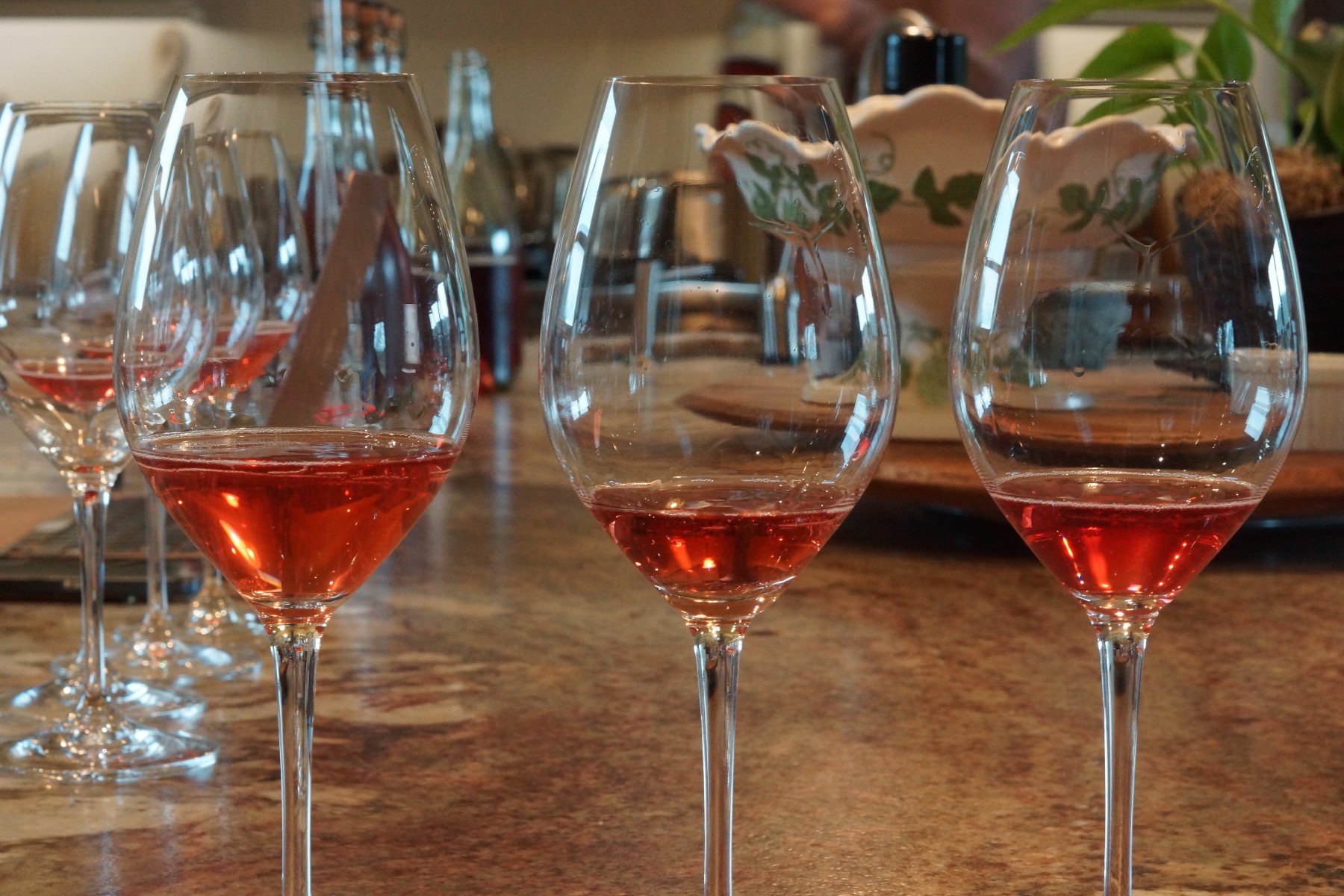
What Did We Decide – Color or Flavor?
It was unanimous. Taste wins over color. As much as we wanted the deeper, cranberry color, we just couldn’t sacrifice taste. Perhaps it’s not the cranberry color that makes our Sparkling Syrah “joy in a bottle”. I’m convinced that in a blind taste test, the joy would come from the bright, fresh picked strawberry flavors with a hint of citrus that bursts on the tongue.
Treat yourself to a little "joy in a bottle". Try our sparkling wines and Rhône varieties. Come Taste With Us!
Amista Owner Vicky Farrow Profiled for International Womens Day
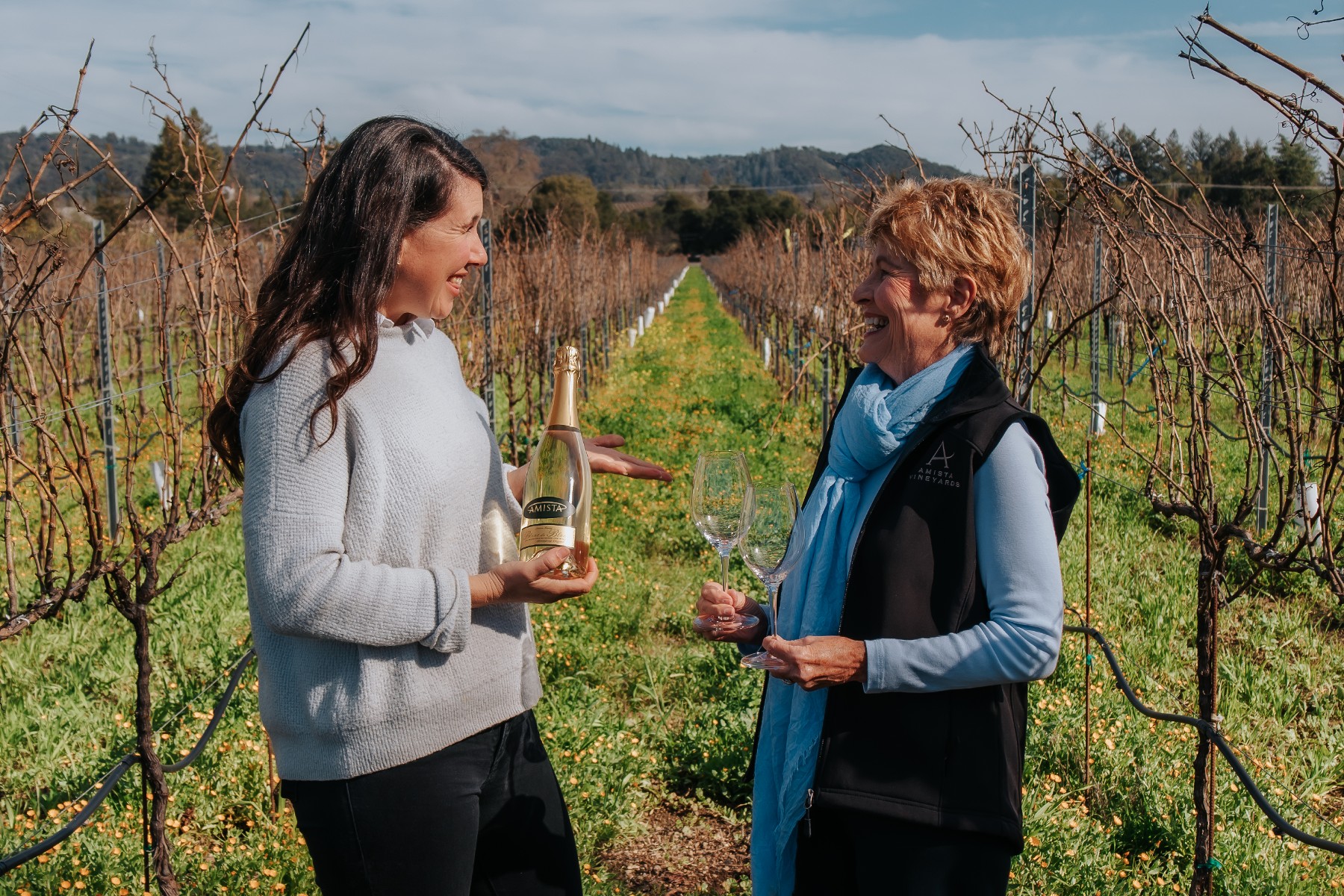
I am honored to be included in an article profiling women in wine for International Women’s Day, plus “the Wines We Are Toasting Them With” by Devin Parr. I’m even more excited to be toasted with a wine created by the women of Amista, our Blanc de Blanc.
A Sparkling Wine Created by the Women of Amista
What makes this wine extra special for toasting International Women’s Day is that it was created as the result of a spontaneous conversation between me and our newly hired woman winemaker, Ashley Herzberg, shortly after she arrived at Amista in 2011. We were standing in the Chardonnay vineyard one day and I asked her, “Do you think we could make a Blanc de Blanc from our Chardonnay?” She didn’t skip a beat when she answered, “Of course!” Mind you, she had not yet made a sparkling wine in her previous winemaking career. But, like me, she loves bubbles. Plus, Ashley is a woman who loves to learn and is always up for a new challenge.
Her First Sparkling Harvest
That fall, Ashley did her first harvest specifically to make a sparkling wine. She picked the grapes earlier than she would for a still wine to achieve lower sugar levels and thus lower alcohol, and higher levels of acid. She was nervous about how to know when the grapes would be ready to pick.
She got some sage advice from another woman winemaker, Penny Gadd-Coster, who had been making sparkling wines for over a decade. Penny told her, “You just still pick for flavors. You're shifting what you're looking for in those flavors. But you're still picking for flavors.” Ashley did just that and the inaugural release of our Amista Blanc de Blanc in 2013 scored 91 points and won a gold medal in the Press Democrat’s “Best of the Best” North Coast Wine Challenge.
Women Making Progress in Wine
As we toast to women in wine on International Women’s Day it’s worth celebrating that “Women have long been making strides in wine and, although the work is by no means done, it’s an exciting time to be a woman in the industry,” says Parr. She’s right.
A lot has changed over the years for women in wine. I have had the privilege of talking with several women involved in making sparkling wine as part of my project Sparkling Discoveries and there is a clear difference in the experiences of the young women of today as compared with the women who began their careers over two decades ago.
The trailblazing women who started their careers back then were consistently told they could not be winemakers because the work was too difficult for women. In my conversation with Eileen Crane, founding winemaker at Gloria Ferrer and Domaine Carneros, she told me that the first professor she met when she was exploring a degree in enology at Davis told her she couldn’t be a winemaker because she wouldn’t be able to do the work in the cellar. “You can’t handle the barrels,’ he told me. He suggested I finish my PhD in nutrition. I told him I’m not going to be doing that. I’m going to be a winemaker.” It took courage and determination to challenge such attitudes.
Today’s Challenges for Women in Wine are Different
The younger women working in wine today no longer face that kind of active opposition. Women are being encouraged to go into winemaking and wine business. They are celebrated, honored and recruited.
Challenges remain however, although they are less blatant. One has to do with the automatic assumption that the man is the winemaker or CEO. When a man and a woman are both pouring at a tasting, the questions about winemaking are typically directed to the man, although that appears to be changing. Kathleen Inman, Owner and Winemaker at Inman Family Wines, says, “I’ve noticed that people are less surprised to find out that I’m the winemaker, and not my husband, than they were 10 years ago.”
The other two challenges are pay equity and the presence of women in the most senior positions in wine businesses. A 2020 study by Wine Business Monthly shows 28.8% of the wineries had a female as Winemaking Director, although the average of the salaries for those females was 8% lower than the average for males. The same study shows 22% of winery CEOs were female but total cash compensation of the men was nearly double that of the women (1.95 times greater).
Inspiring Stories of Today's Women in Wine
So yes, there is still work to do. That is why it’s inspiring to read about examples of women with “extraordinary talent in wine” as described by Parr, and to hear what embracing equity means to each of them.
Read “15 (or so) Women We Are Toasting This International Women’s Day…And the Wines We Are Toasting Them With” by Devin Parr.
A Toast to Ashley Herzberg Next Generation Winemaker from Amista
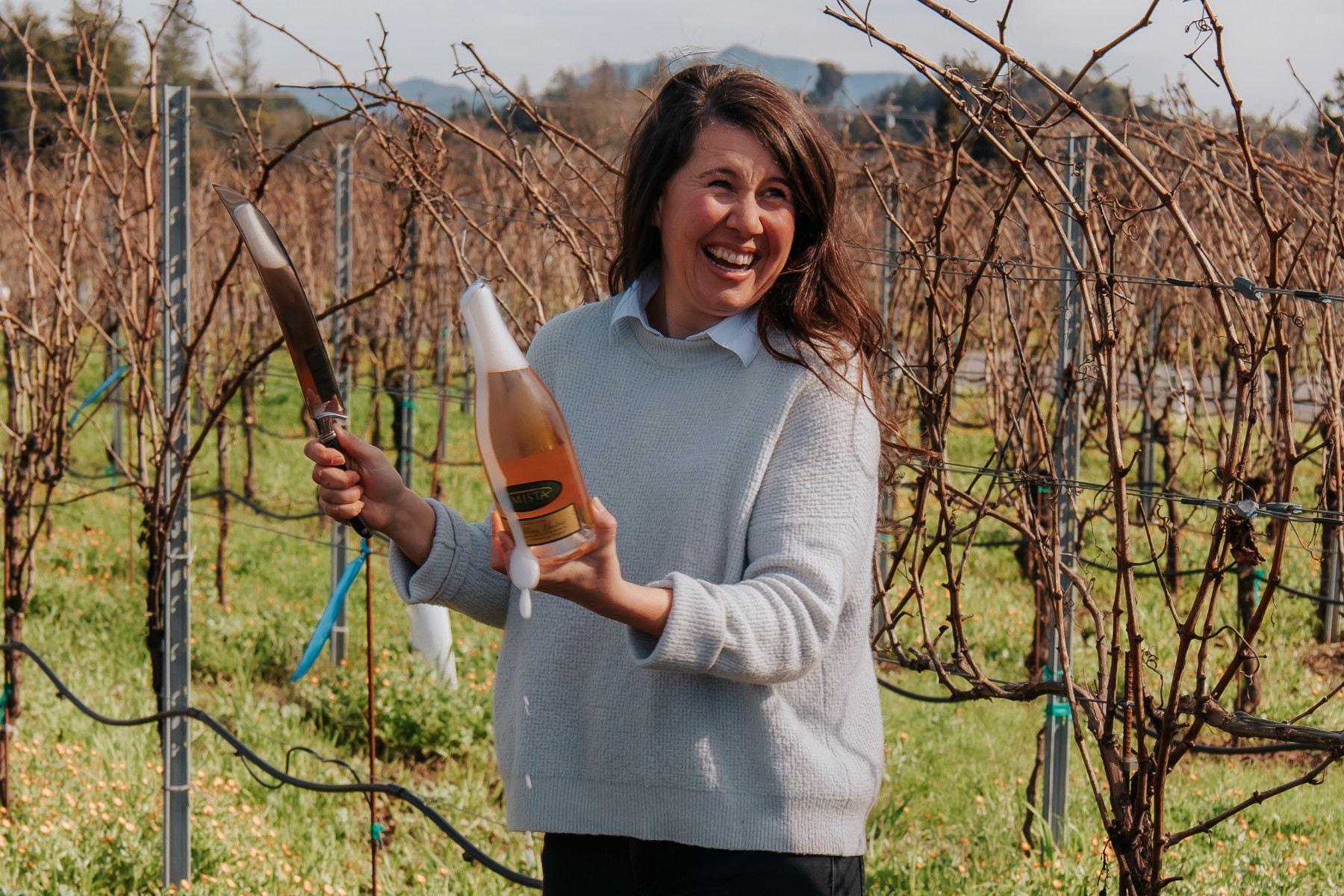
“As the consulting winemaker for Amista Vineyards and Cast Wines, Ashley’s talents have produced many memorable wines. If you haven’t tried the Amista sparkling wine collection, be sure to stop by soon,” writes Rebecca Germolus in her article “A Toast to Women Winemakers.”
“In honor of Women’s History Month, let’s explore the paths of a few women winemakers along the Wine Road,” adds Germolus. If you are familiar with Sonoma County wine, you’ll know the names of the three women she features as pioneers, Carol Shelton, Julia Iantosca and Phyllis Zouzounis. Not only do they craft amazing wines, but they truly have been part of blazing the path for a future generation of women winemakers in Sonoma County. Rebecca proposes a toast to these pioneering women, saying, “A big thank you to Carol, Julia and Phyllis for staying the course.” We couldn’t agree more.
We are thrilled that Ashley is recognized as one of the next generation women shaping winemaking in Sonoma County. She is in good company on this list of other extremely talented female winemakers. She knows and interacts with all these women. That is one of the most wonderful things about Northern Sonoma County. There is a sense of connection, mutual support and admiration that permeates our wine community. By the way, men are not excluded, although I suspect the bond with other women is something extra special.
One of the ways Ashley stands out is making sparkling wines. Only a handful of winemakers in Sonoma County can make that claim plus Ashley is equally talented at crafting still wines. Her focus at Amista is on creating elegant, approachable sparkling wines from varieties that are not traditional - Rhône varieties - though she uses the traditional method, the same process that is used to make French Champagne. She is currently making six sparkling wines for Amista, all grown in our estate vineyards, and has another fermenting in the bottle to be released in 2024 to celebrate our 20th anniversary.
If you haven’t tried her sparkling wines or need to treat yourself again, we invite you to Taste With Us and toast to the women winemakers along the wine road.
Read “A Toast to Women Winemakers,” by Rebecca Germolus.
Celebrating Sparkling Women in History
From Veuve Clicquot to Amista’s Ashley Herzberg
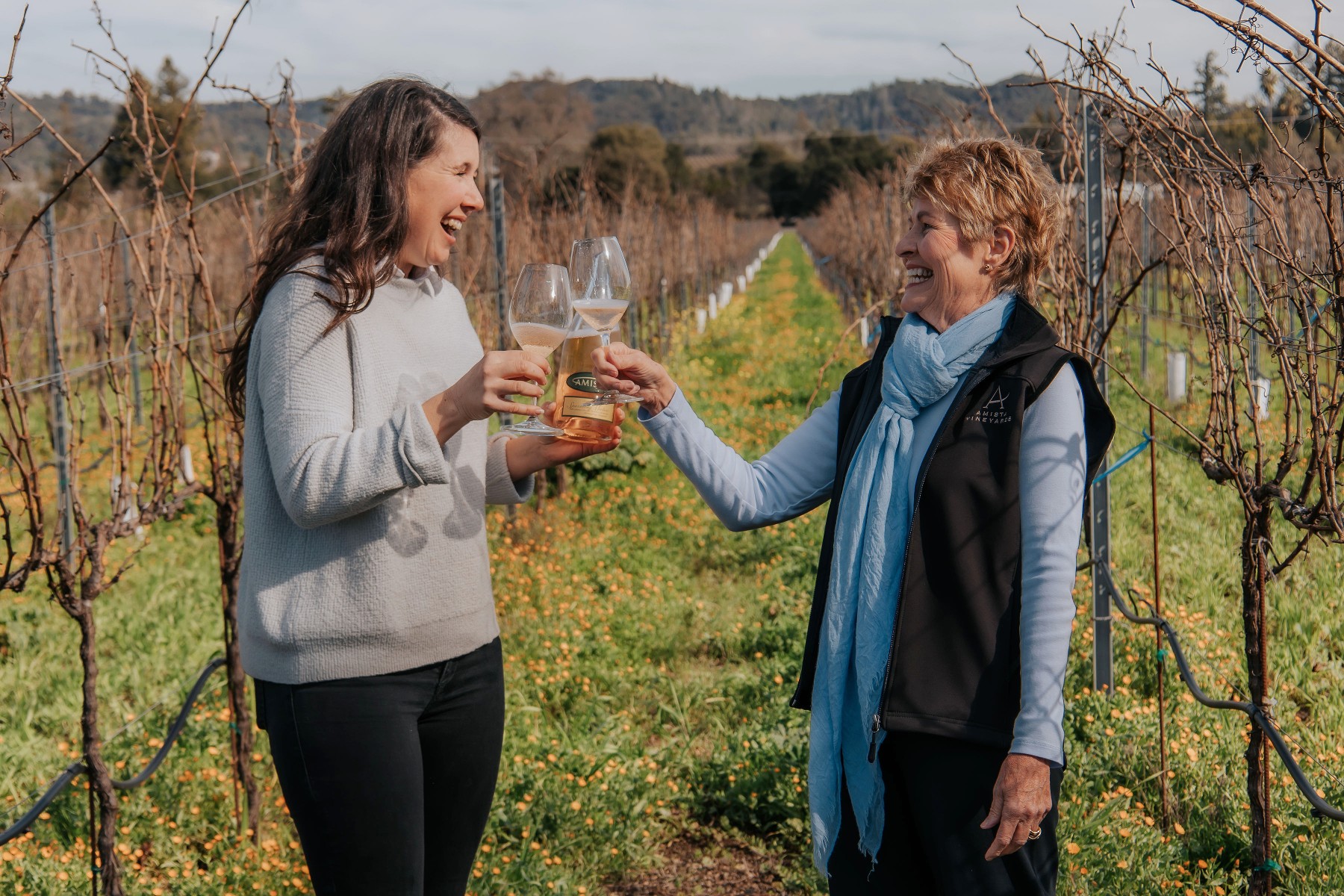
…a toast to the women of sparkling – past and present
I just read an excellent article titled “How three widows came to rule Champagne” about the women who created some of Champagne’s most lauded empires. Although women were restricted from owning a business without the permission of their husband or father in 19th century France, widows were exempt from this rule.
Female Ingenuity in Champagne
“Some of the biggest innovations of Champagne came down to the ingenuity of several women…Barbe-Nicole Clicquot-Ponsardin, Louise Pommery and Lily Bollinger – among others – to turn vineyards into empires and ultimately transform the Champagne industry, permanently changing how it's made and marketed,” writes Lily Radziemski in BBC.com's World’s Table.
Bold Actions by Three Widows
It is good to be reminded of some of the bold actions of these three Champagne widows such as running the blockade into Russia to beat her biggest competitor to market before the borders opened, dramatically reducing the dosage (residual sugar) in her Champagne from the typical 300 grams per liter to what is now called Brut (12 grams or less) to appeal to the British market, or traveling alone across the U.S. to hand sell her Champagne to the American market.
Drawing Inspiration from Women's History Month
I’m inspired by these women who ignored what was considered acceptable for women at the time and daringly stepped in to manage and ultimately transform the businesses they inherited. “The independence and creativity of the three widows paved the way for generations of women to come,” explains Radziemski.
Paving the Way for Today's Women in Sparkling
The conversations I have with women leaders in sparkling wine prove her point. I continue to be inspired by the women who are blazing new trails in today’s business world. I enjoy the great privilege of having in-depth conversations with some of today’s female leaders in sparkling wine through my new project, Sparkling Discoveries. [We include men as well, but given that March is Women’s History Month, my focus is on women in this post].
Eileen Crane was hired as the winemaker for Gloria Ferrer, the first sparkling winery in Carneros, and discovered that in addition to making the wines, she would be responsible for constructing the winery and visitor center and launching the new brand. She went on to lead Domaine Carneros, starting one of the first wine clubs, pioneering the installation of solar at a winery and practicing “open book management.”
Penny Gadd-Coster became a sparkling winemaker after two previous careers – one in research and the other in hospital emergency rooms. She was told countless times that she could never become a winemaker because, “People didn’t think women should be in the cellar. The work was too physical,” explains Penny. She went on to be the Executive Director of Winemaking at Rack and Riddle, a custom wine services operation that produces wines for hundreds of sparkling wine houses.
Joy Sterling, owner of Iron Horse Vineyards, had a successful career in broadcast journalism until on her 10th anniversary she abruptly quit her job and moved to Sonoma County with no plan and no experience, to join her family’s sparkling wine business. She has become a master at creating new sparkling wines, often contributing part of the proceeds to causes that are dear to her heart such as the Marine Mammal Center (Ocean Reserve) and Redwood Empire Food Bank (Gratitude).
And speaking of close to the heart, I am fortunate to work alongside our woman winemaker at Amista, Ashley Herzberg, for the last 12 years and counting! She a trailblazer when it comes to winemaking, being the first woman to make a “grower sparkling wine” in Dry Creek Valley. She also manages to juggle being a busy winemaker, harvesting from multiple vineyards, working in several production facilities, making still and sparkling wines and attending numerous wine events, with being a dedicated mom to her two children. I am especially inspired by how she weaves together her work, her family, her friends and her community into a seamless life of constant learning, passion and delight.
Ashley and I are honored and proud to be part of a growing community of wineries in Sonoma County that are female led with female winemakers.
Read “How three widows came to rule Champagne”
Check out more Sparkling Conversations with other interesting people from the world of sparkling wine.
Amista Wine - Sparkling Grenache an Effervescent Dream!
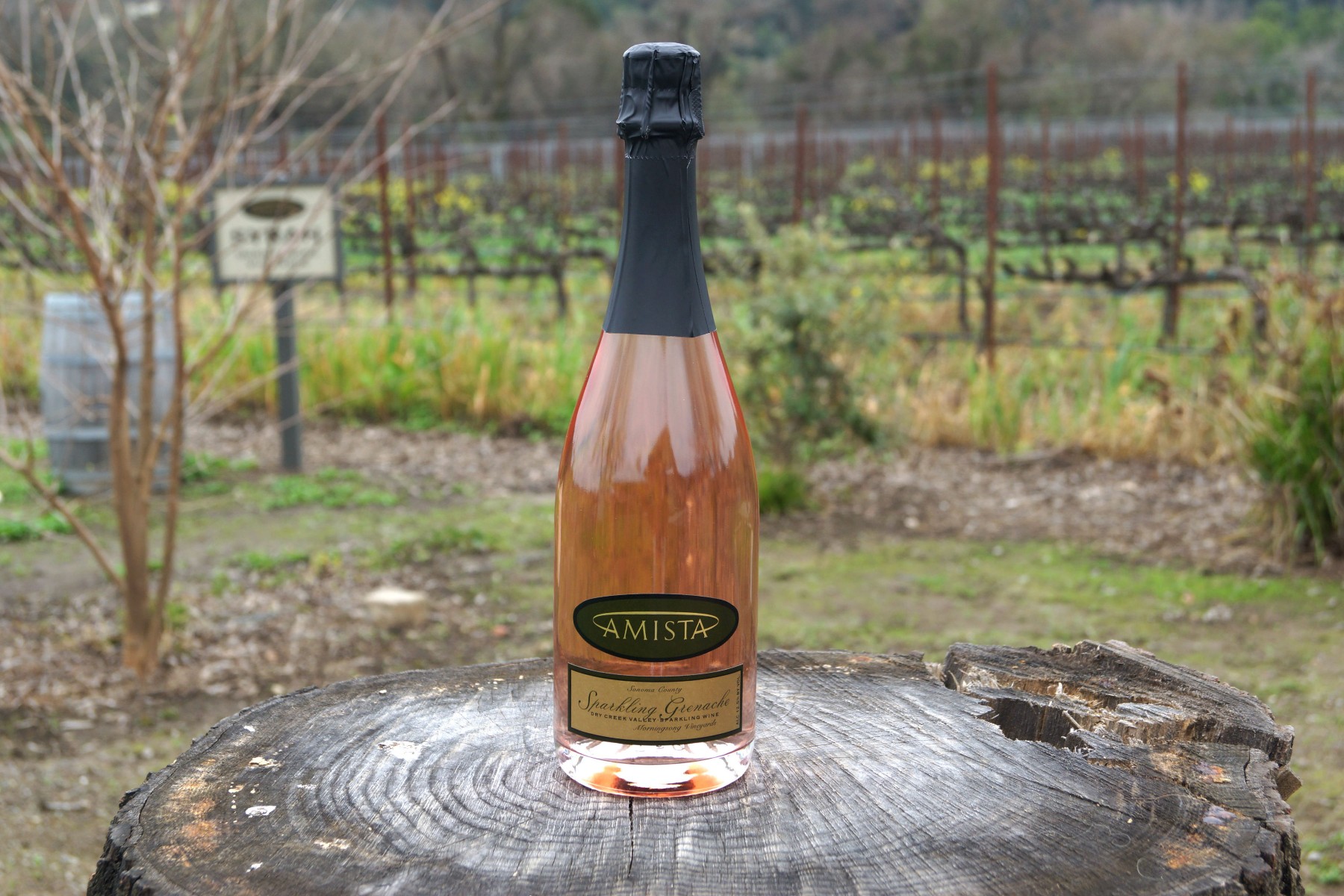
“This effervescent dream benefits from being made using the Methode Champenoise, which is the process used to make fine French Champagne,” suggests a feature called Special Sips in the Scottsdale Airpark News.
If you happen to be in the Scottsdale airport, you might see Amista featured in this magazine. We are delighted to be included with so many other fine wines from Sonoma County along with a few from Napa Valley. Our Sparkling Grenache is described as an “effervescent dream” adding, “If nothing else, try this one for its nose, which is bursting with tangerine, grapefruit, and Meyer lemon.”
But what would be the point of just sniffing the wine when you can experience the joy of bubbles dancing on your tongue and treat your palate to the flavors of freshly picked strawberries?
Why Sparkling Grenache?
At Amista we specialize in estate grown red Rhône varieties. We also specialize in making sparkling wines using the classic method used in Champagne. So, it’s no surprise that we love to make sparkling wines from our Rhône varieties. Winemaker Ashley Herzberg loves all bubbles – Champagnes, especially those made by small grower/producers, Crémants, Cava’s and sparkling wines made in the U.S. She had been making a sparkling rosé from another Rhône grape from our estate vineyards since she joined us in 2011. In 2013 she was ready to make another sparkling rosé and thought the Grenache grown on our estate Morningsong Vineyards would be perfect. She was right!
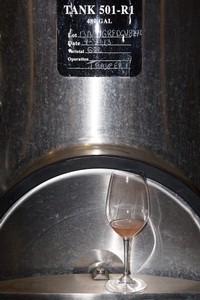 Our First Sparkling Grenache
Our First Sparkling Grenache
She harvested the grapes earlier than for the still Grenache to achieve the right balance of sugar, acid and flavors for a sparkling wine and left them on the skins for just a few hours to achieve a delicate pink color. She calls is “ballet slipper pink”. I will never forget experiencing this wine for the first time. We were in the cellar, and she took a small sample from the tank. The color was amazing, and yep, it was ballet slipper pink. Our first taste was before its secondary fermentation in the bottle, which is what produces the delicate bubbles. Even as a still wine it was beautiful on the palate.
Amista Sparkling Grenache Selected as One of Ten Hot Brands
It would be 18 months before we could taste the resulting sparkling wine. We feel in love. But we weren’t alone. Wine Business Monthly selected the inaugural release of our Sparkling Grenache and Amista as one of 10 Hot Brands in 2017.
"Sparkling wine isn't just for celebrations anymore. That's not to say we shouldn't be drinking sparkling on momentous occasions or for holidays - if you asked Vicky Farrow and Ashley Herzberg, we should be drinking it every day of the year. Maybe they're a little biased - they're in charge of the sparkling wine program at Amista Vineyards, tucked away along Sonoma County's famed Dry Creek Road - but it does sound like they're on to something big." says Wine Business Monthly.
We now have a collection of six sparkling wines with a seventh to debut in 2024 to celebrate the 20th anniversary of Amista. Stay tuned!
Check out "Special Sips" in the Scottsdale Airpark Magazine.
Amista Proprietor Vicky Farrow Launches Sparkling Discoveries
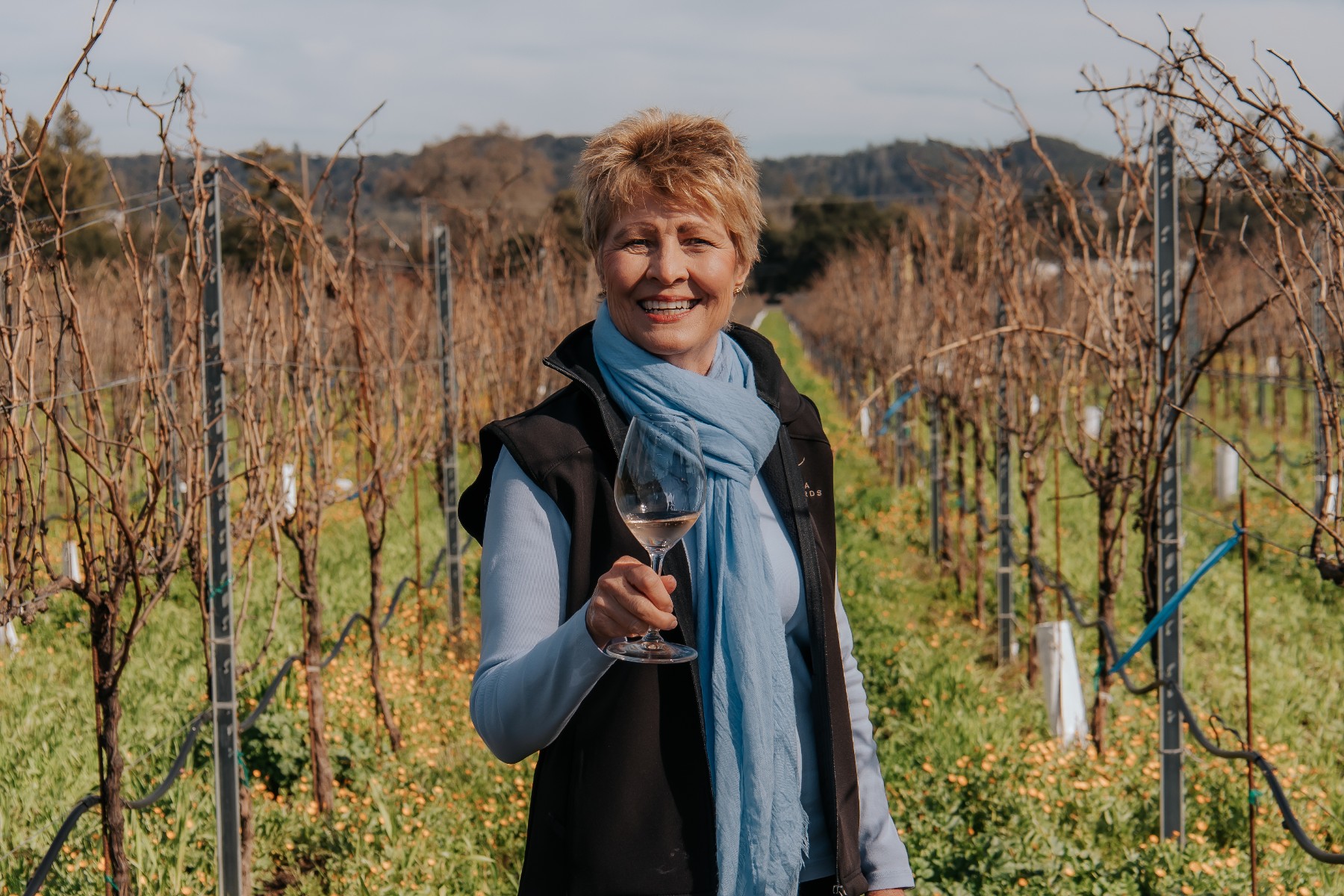
“Last fall, Farrow launched Sparkling Discoveries, a website that showcases in-depth conversations with leaders in the sparkling wine world, as well as news, education and resources for all things sparkling wine,” writes Sarah Doyle in an article showcasing the launch of my new pet project.
Why Sparkling Discoveries?
As I told Sarah, when I pop a cork and the bubbles rise, I see the joy it brings people. It’s celebratory, but it’s more than that. It’s something you want to share. “That joy is what drove Farrow to launch Sparkling Discoveries, a website she had initially envisioned as a blog about her personal journey into wine. She quickly found she was more interested to hear others’ stories,” adds Doyle.
A friend recommended I interview people about how they got started in sparkling wine and the lessons they learned along the way. I loved the idea of sharing their stories, so a blog about my journey morphed into a new online platform called Sparkling Discoveries.
Why Sparkling?
It’s no secret that I love bubbles! Not only do I enjoy sipping, discovering and sharing bubbles, I am lucky enough to find myself leading a winery that produces sparkling wines. Even more fun is that we experiment with non-traditional grape varieties and blends. When my husband Mike and I started Amista, we never envisioned that we would make sparkling wines.
Our first foray into bubbles came as a result of a class project by our consulting winemaker. He asked if he could have some of our Rosé of Syrah so his class could turn it into sparkling wine. We tasted the result and immediately decided we would make some ourselves. That was in 2008. In 2011, we added a sparkling Blanc de Blanc with the arrival of our new winemaker, Ashley Herzberg, who also loves bubbles.
Making sparkling wine added a whole new dimension to Amista and to our lives. We now make six different estate grown sparkling wines using the traditional method, the Methode Champenoise that is used to make fine French Champagne. We have a seventh scheduled for release in 2024. We were the first to produce a grower sparkling wine in Healdsburg, to offer a sparkling wine flight and a sparkling only wine club. By the way, we also have a collection of Rhône reds and white wines, meaning we have a little something for everyone.
Why Discoveries?
I didn’t want to do the usual interview with the same old stale questions and rehearsed answers. I wanted to tell genuine stories from the thought leaders in sparkling wine – their hopes and dreams, their fears and failures. My previous career was focused on leadership – studying, coaching and helping develop leaders - and I am intrigued to uncover the experiences and lessons learned from remarkable leaders.
So, the blog is called Sparkling Conversations. I want it to feel like a conversation between friends rather than a formal interview. My goal is for the readers to discover something they wouldn’t have guessed or known about the person; to go deeper; to focus less on “the what” and more on “the why” and the “so what”; to uncover the life and leadership lessons from people who are making a difference in the world of sparkling wine.
The Perfect Pairing
Sparkling Discoveries combines two of my great joys – discovery and sparkling wine. When you’re doing something you love, it isn’t work. As I explained to Sarah, my dream is that the platform will foster a sense of connection among sparkling winemakers and enthusiasts and celebrate “the magic behind the sparkle.”
Read “Profiles in wine: Vicky Farrow launches Sparkling Discoveries, online community for sparkling wine lovers” by Sarah Doyle in the Press Democrat.
Amista Wine - How We Fell in Love with Sparkling Rhône Varieties
Let’s Start with a Sparkling Syrah!
The very first sparkling wine we made was from a Rhône grape – a Sparkling Syrah – and we’ve been making it since 2008. Technically it is a rosé of Syrah because it spends only a few hours on the skins before being pressed off. It is a gorgeous cranberry color. It’s festive. It shimmers in the glass. I call it ‘joy in a bottle’.
But Winemaker Ashley Herzberg wasn't so sure. She received two bottles as a gift from my husband Mike before she became our winemaker. She stuck it in her closet thinking it would be icky and sweet. One night she pulled it out to serve to her girlfriends - a good way to get rid of it. They immediately started raving about it, so she took a taste. She became a convert and has been making and sipping “joy" ever since.
Our current release has aromas of black cherry, roasted strawberries and cream, toasted almonds and a hint of ruby red grapefruit zest. The front palate is bright and filled with berry notes. The finish has great acidity and balance with a slight savory character that makes it deliciously food friendly. The finish is beautiful and lingering.
Sparkling Syrah Pairs Beautifully with Spicy Foods
One thing we’ve learned about Rhône-style wines is that they pair beautifully with a wide array of foods. The Sparkling Syrah is a perfect example. It is especially at its best with spicy foods, from Thai, to Indian to Mexican. It is also right at home on a holiday table because it has enough body to stand up to the vast assortment of flavors that are part of the feast and provides a refreshing counterpoint to the rich dishes that are typical of holiday celebrations.
Winemaker Ashley says the most interesting pairing she has had with a sparkling wine was the Sparkling Syrah with Peking duck roasted in a wood burning oven. “I was surprised because I don't love duck. It's not my cup of tea, but the Sparkling Syrah cut through the richness of the duck and just sort of brought it to another level and I was like, oh, duck needs something acidic to brighten the flavors,” explained Ashley.
Syrah was among the first wines we made when we launched Amista Vineyards. It has always played a big role in our wine program. We planted Syrah on our estate Morningsong Vineyards in 2000, and although we didn’t have much experience drinking Syrah, we quickly fell in love. It is a very drinkable wine without the heavy tannins of a Cabernet or the big jammy flavors or a Zin.
Bring on More Rhône Varietals
In 2011 we added two more Rhône varietals to our estate vineyards, Grenache and Mourvèdre. That enabled us to produce a Grenache, a Mourvèdre and a Rhône-style blend we called Tres, to stand beside our flagship Syrah. Tres was our first blend and it quickly became my husband Mike’s favorite, and my second favorite after anything sparkling! Tres is the wine I would take to a dinner party knowing that it would please any palate and drink well with nearly any dish.
Let’s Make Another Sparkling Rhône
So, you can see that we came to plant, make and love red Rhône varietals. But winemaker Ashley and I love bubbles and she wanted to make sparkling wine from the Grenache. I was all in! I can still remember the first taste of the still Grenache rosé that would eventually become a sparkling wine. Ashley took it right from the tank and the wine was gorgeous in the glass – a pink blush color – and even more gorgeous to taste. We both knew immediately that this would be an incredible sparkling wine. Wine Business Monthly agreed, selecting it as one of 10 Hot Brands the year it debuted.
Five Sparkling Rhône-style Wines in Our Collection!
Today we have five sparkling wines made in whole or in part from Rhône varieties. In addition to our Sparkling Syrah, which has become a cult favorite, and our Sparkling Grenache, which sells out every year, we have Sparkling Mataró (made from 100% Mourvèdre grapes), Sparkling Tres (a blend of Grenache, Syrah and Mourvèdre) and Fusión (a blend of Chardonnay – which is not a Rhône grape – with Syrah and Grenache).
Treat yourself and explore our Rhône-style sparkling wines.
